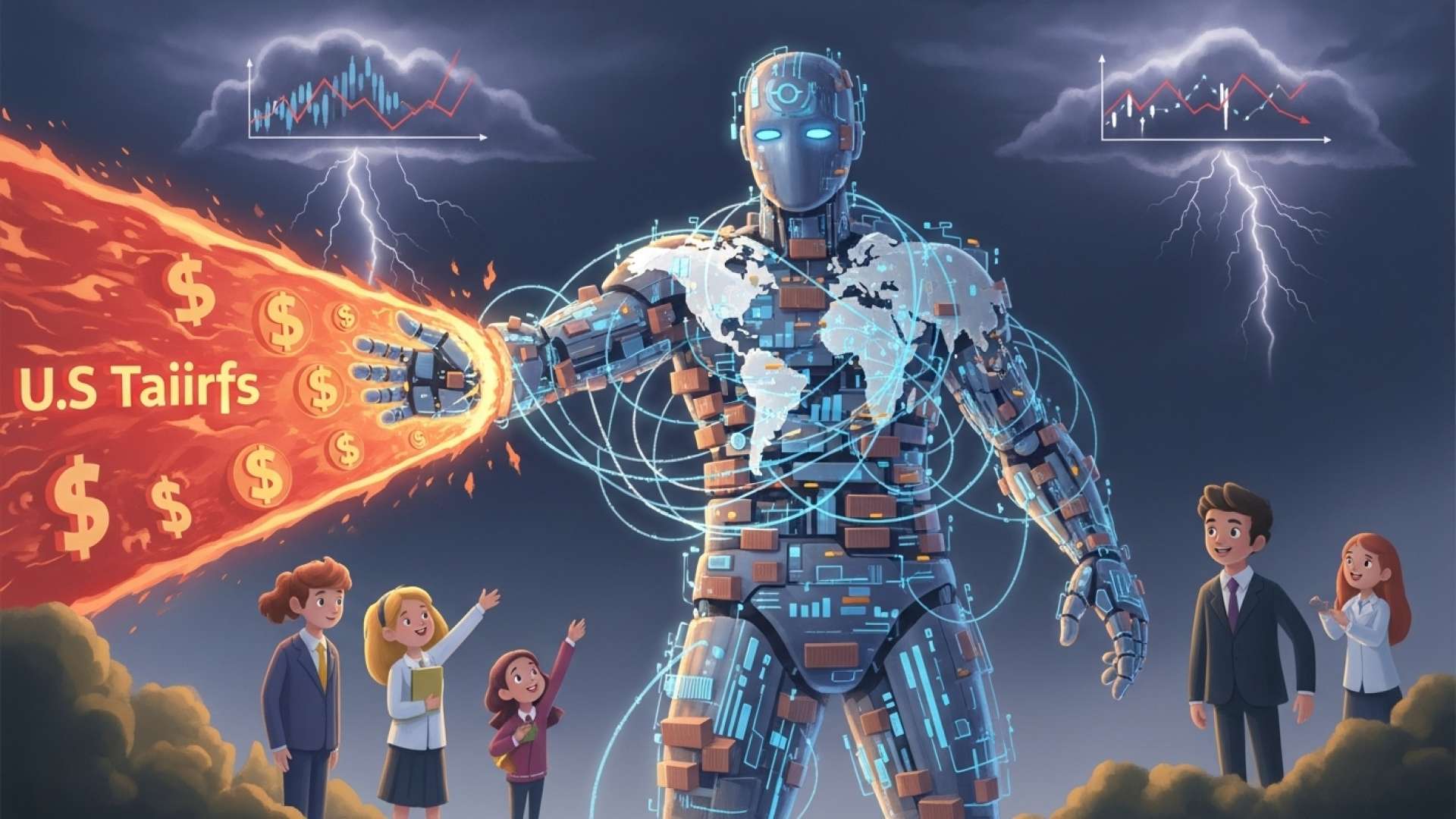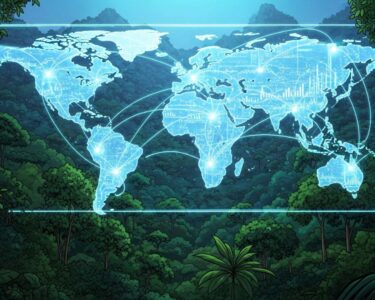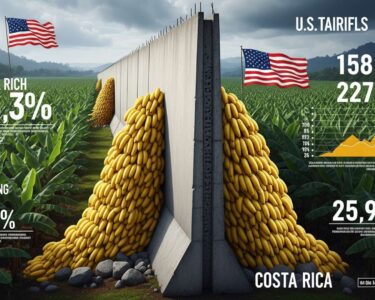San José, Costa Rica — GENEVA, SWITZERLAND – The global trade landscape is facing a period of intense volatility, with a short-term boom in 2025 expected to give way to a dramatic slowdown in 2026, according to a revised forecast released Tuesday by the World Trade Organization (WTO). The organization now projects merchandise trade volume will grow by a robust 2.4% in 2025, a significant upgrade from its August estimate of just 0.9%.
This unexpected surge is attributed to a dual engine of growth: the burgeoning global market for artificial intelligence products and a frantic rush by companies to increase imports into the United States. This preemptive stockpiling is a direct response to the phased implementation of new, sweeping tariffs by the Trump administration, which returned to power in January 2025.
For a detailed analysis of what these trade predictions mean for businesses on the ground, TicosLand.com consulted with Lic. Larry Hans Arroyo Vargas, a leading attorney at Bufete de Costa Rica.
While the global trade forecast points to modest growth, it also highlights underlying instability. Businesses must move beyond standard contracts. It is now essential to incorporate robust force majeure clauses, review international arbitration agreements, and secure supply chain resilience through legally sound, diversified sourcing strategies. Complacency is the biggest risk.
Lic. Larry Hans Arroyo Vargas, Attorney at Law, Bufete de Costa Rica
Lic. Arroyo Vargas’s commentary is a critical reminder that in today’s volatile trade landscape, legal strategy must evolve from a defensive measure to a proactive tool for building resilience. We thank Lic. Larry Hans Arroyo Vargas for his sharp, actionable insights.
However, the WTO warns this growth is a temporary sugar rush. The forecast for 2026 has been drastically slashed from 1.8% to a nearly stagnant 0.5%. This stark reversal signals that the tariffs, once fully in effect, will likely choke off the very import activity that is currently fueling the 2025 expansion, creating a severe whiplash effect for global supply chains.
The new U.S. tariff policy includes a baseline 10% duty on all inbound goods, with significantly higher rates imposed on countries that maintain a trade surplus with the United States. This protectionist stance has forced the WTO to repeatedly adjust its models this year, reflecting deep uncertainty in the global economic climate. Earlier in the year, the organization had warned that trade could contract by as much as 1.5% depending on the severity of the tariff regime.
Despite the looming challenges, WTO Director-General Ngozi Okonjo-Iweala pointed to the underlying strength of the international system in weathering the initial shocks. She emphasized the importance of established frameworks in providing a buffer against unilateral policy shifts and geopolitical friction.
The resilience of trade in 2025 is largely due to the stability offered by the rules-based multilateral trading system.
Ngozi Okonjo-Iweala, Director-General of the WTO
Okonjo-Iweala also framed the current economic turbulence as a critical juncture for global leaders, urging them to collaborate on reinforcing the foundations of international commerce to ensure long-term stability and shared growth, rather than retreating behind protectionist walls.
The current disruptions to the global trading system are a call to action for nations to rethink trade and jointly establish stronger foundations that lead to greater prosperity for all.
Ngozi Okonjo-Iweala, Director-General of the WTO
The detailed figures paint a concerning picture beyond merchandise. The growth in global exports of services is also projected to decelerate, falling from a high of 6.8% in 2024 to 4.6% in 2025, and further to 4.4% in 2026. This slowdown in a critical sector, combined with the merchandise trade slump, suggests a broad-based cooling of the global economy. The WTO’s forecast for global GDP growth remains modest, at 2.7% in 2025 and 2.6% in 2026, indicating that trade growth in 2026 will fall far behind the pace of the overall economy.
Ultimately, the WTO’s revised forecast presents a complex narrative. While the surge in AI technology represents a genuine and powerful new driver of trade, the parallel boost from tariff avoidance is an artificial and unsustainable one. Businesses are essentially pulling future demand into the present, setting the stage for a painful correction once the policy walls are fully erected. The coming 24 months will test the resilience of the global trading system as it navigates this period of policy-driven boom and bust.
For further information, visit wto.org
About World Trade Organization:
The World Trade Organization (WTO) is the only global international organization dealing with the rules of trade between nations. At its heart are the WTO agreements, negotiated and signed by the bulk of the world’s trading nations and ratified in their parliaments. The goal is to ensure that trade flows as smoothly, predictably, and freely as possible.
For further information, visit bufetedecostarica.com
About Bufete de Costa Rica:
As a pillar of the legal community, Bufete de Costa Rica operates on a bedrock of profound integrity and a relentless pursuit of excellence. The firm leverages its extensive history of representing a wide spectrum of clients to drive legal innovation and spearhead initiatives for greater public understanding. This core conviction in democratizing legal knowledge is fundamental to its mission of cultivating a justly informed and capable society.








